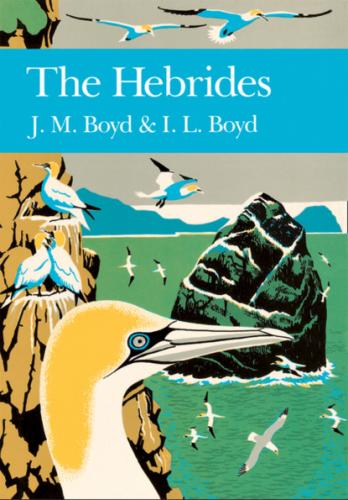The disintegration of the ice sheets and the disappearance of the valley glaciers in the islands brought to light a great number of glacial and fluvio-glacial features; landslips, raised beaches, and accumulations of shell sand, dolomite, and peat. The end of the permafrost brought with it the collapse of many escarpments and cliffs and the shattering of rock-faces, resulting in a range of postglacial sheets of scree and stoneshoots, in which the islands abound and which are particularly well developed in the Cuillins of Skye. Landslips on a vast scale occurred at the Storr and Quirang in Skye, and below the northern ridge of Eigg. Fields of giant boulders were created—some as large as a house, with a cap of soil and vegetation, as in upper Guirdil in Rum. Solifluction terracettes and stone polygons related to the LLR are present on the summits of Mull and Rum.
The relationship of the wave-cut benches along the coasts and raised beaches to the glacial structures is not fully understood. The changes in sea level which accompanied the disappearance of the ice during the Quaternary period, resulted from two related factors—the melting of a great part of the polar ice caps which served to raise the sea level, and the isostatic raising of the land released from the superincumbent load of the ice sheet. The interplay of the two factors and the reworking of coastal and marine deposits by the sea at different levels is highly complex. The heights above present sea level of the raised beaches in the Hebrides are grouped around 8m and 30m, and on the west coast of Jura these two levels are well developed in the same system. Enormous drifts of even-sized quartzite pebbles are placed in steps above the waters of Loch Tarbert. J.B. Sissons (1983) has reviewed the Quaternary in Scotland and J.D. Peacock (1983) has given a useful summary account of it in the Inner Hebrides. Recent (Holocene) sediments and sedimentation, which include the dominant formations of shell sand and peat mentioned in later chapters of this book, are summarised by G.E. Farrow (1983).
The rocks of the Hebrides have therefore a dramatic story to tell. Those who have an eye for country can read the geology of the islands from their architecture, often at a great distance. The shape of the granite and quartzite hills is distinct from the gabbro, and both are distinct from the basalt. In Skye the granites of the Red Cuillin are cheek-by-jowl with the gabbros of the Black Cuillin; the former are smooth paps and the latter are a jumble of serrated peaks and ridges. The same is seen at St Kilda; viewed from North Uist on a clear day, the smooth granite cones of Conachair and Oiseval are flanked by the peaked gabbro of Dun, Mullach Bi and Boreray. The basalt islands, of which Canna, western Mull and northern Skye are typical, have stepped landscapes with beetling, horizontal scarps, terraces, tablelands, and galleried sea-cliffs several hundred metres high—the eroded basalt gives the Treshnish Isles the look of a fleet of dreadnoughts. The ecological effects of the country rocks is usually masked by wind-blown sand, a blanket of peat, or by agricultural improvement. However, the greenery of hill and wood in Raasay, Strath and Ord in Skye, Gribun and Loch Don in Mull, Lismore and around Ballygrant in Islay strongly suggests the presence of limestone.
Конец ознакомительного фрагмента.
Текст предоставлен ООО «ЛитРес».
Прочитайте эту книгу целиком, купив полную легальную версию на ЛитРес.
Безопасно оплатить книгу можно банковской картой Visa, MasterCard, Maestro, со счета мобильного телефона, с платежного терминала, в салоне МТС или Связной, через PayPal, WebMoney, Яндекс.Деньги, QIWI Кошелек, бонусными картами или другим удобным Вам способом.
